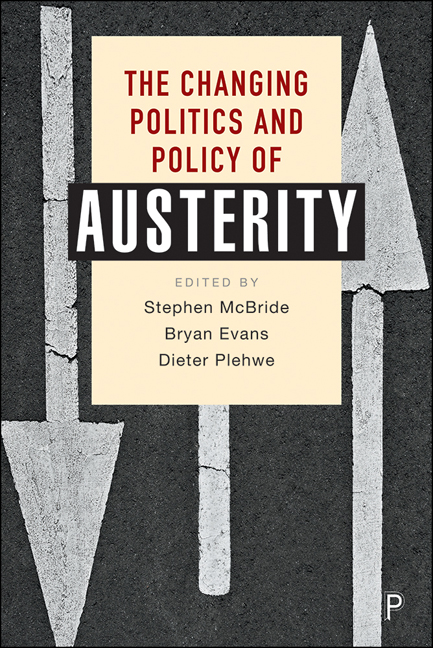Book contents
- Frontmatter
- Contents
- List of figures and tables
- Notes on contributors
- Acknowledgements
- Introduction
- PART I Austerity and the promotion of the private
- PART II Coping and casualties: labour and the social
- PART III Beyond coping: protest, pathologies and the development of real alternatives
- Conclusion
- Index
9 - Market populism, its right-wing offspring and left alternatives
Published online by Cambridge University Press: 13 May 2022
- Frontmatter
- Contents
- List of figures and tables
- Notes on contributors
- Acknowledgements
- Introduction
- PART I Austerity and the promotion of the private
- PART II Coping and casualties: labour and the social
- PART III Beyond coping: protest, pathologies and the development of real alternatives
- Conclusion
- Index
Summary
No spending cuts, privatizations and lowering of social standards without left criticism (for an equally prominent and comprehensive example see Blyth 2013). These criticisms fit nicely into a broader stream of left-leaning scholarship that portrays neoliberalism as a political project, as a class struggle from above, that includes austerity, along with the reorganization and relocation of production processes, aiming to shift the balance of power, income and wealth distribution from the popular to the propertied classes (Saad-Filho and Johnston 2005; Harvey 2007).
No election of populist governments without liberal criticism (Mudde 2017; Müller 2017). Without much differentiation between left-and right-wing populism on the one hand and between economic, that is, free market, liberalism and liberal democracy on the other hand, populism and liberalism are portrayed as antitheses in these criticisms. By mobilizing ‘the people’ against presumptuous elites, populists deny individuals their rights of free expression and exchange. Populism, liberal critics conclude, lead to the decay of democracy and markets (for a critical view see Streeck 2017).
Left critics of austerity and neoliberalism and liberal critics of populism have one thing in common: they see the individuals belonging to the popular class or ‘the people’ as rather passive, easy prey for corporate media or populist agitators. Left critics don't spend much time asking why so many workers have voted, over and over again, for parties advocating for the rollback of unions and the welfare state. They either claim or imply that workers just don't understand their interests as a class. Liberal critics are usually more open in denouncing ‘the people’ as a bunch of stupids who don't recognize the virtues of open societies and markets. They rarely ask whether markets allow the advancement of a few at the expense of the many who are left behind. They are even less concerned with the question of whether the subjugation of liberal democracy to the profit imperatives of neoliberal globalization produces its own discontents who are then ready to be picked up by various brands of populism.
Left and liberal critics adopt a model in which the supply of neoliberal or populist ideas, respectively, create their own demand. This chapter shifts the focus to the demand side.
- Type
- Chapter
- Information
- The Changing Politics and Policy of Austerity , pp. 195 - 212Publisher: Bristol University PressPrint publication year: 2021

